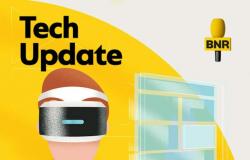Researchers from the American Baylor College of Medicine in Houston and the University of Arizona have developed a method to give surgeons biofeedback about their posture during long-term operations. The method should ultimately ensure that surgery becomes less physically demanding for surgeons.
The pilot study, the results of which have been published in the American journal Journal of Neurosurgery: Spine, examined the feasibility of using wearable technology to assess the posture of neurosurgeons during long back and skull surgeries. The results show that it is indeed possible to make surgeons aware of their posture through objective feedback from wearable technology. Based on the data, protocols aimed at correcting posture to prevent problems with the musculoskeletal system (i.e. the bones, muscles and tendons) can also be implemented by surgeons.
“Wearable technology can detect when someone is standing incorrectly for a long period of time and then provide notifications to correct the posture,” says lead author Dr. Alejandro Zulbaran-Rojas, research associate in the Michael E. DeBakey Department of Surgery at Baylor College of Medicine. Because although it is known that the static posture of neurosurgeons can cause many problems, there are only limited options to control that posture.
Wearable sensors
In this study, muscle stiffness in the upper body of the neurosurgeon was measured when he leaned forward or backward. Ten neurosurgeons (including five surgeons in training) received two wearable sensors on the back of the head and the upper back. The sensors tracked the average amount of time the surgeons stood in an extended, neutral and flexed static position during back and skull operations.
The researchers analyzed data from sixteen recordings made during eleven procedures (eight dorsal, three skull). “The surgeons maintained a static position for approximately 52.1% (38 minutes) and 53.2% (77.6 minutes) of active operating time during back and cranial surgeries, respectively,” Zulbaran said. “That’s quite a long time. Especially when you know that the American College of Surgeons recommends avoiding prolonged static positions by taking a short break at least every 30 minutes for stretching exercises.”
Objective biofeedback
Taller neurosurgeons were found to stand even longer in flexed and extended positions during cranial surgery. “Objective biofeedback can help surgeons adjust their posture to the height of the operating table. The feedback can also help surgeons work more ergonomically, especially during procedures that involve constant position changes (alternating between sitting and standing). Finally, interventions can be tailored to specific procedures and the surgeon’s expertise.
“You might expect people to straighten up automatically, but the problem is that surgeons cannot always reach everything easily during procedures,” Zulbaran explains. “Wearable technology can ensure that surgeons themselves become aware of static postures over time. By alerting surgeons to incorrect movement patterns at an early stage, they can correct their posture and prevent long-term problems.”
Preventing physical problems
“The potential impact and implications of our findings are particularly relevant to surgical practice,” says corresponding author Dr. Bijan Najafi, professor in the Michael E. DeBakey Department of Surgery. “Using wearable technology to monitor and analyze surgeons’ posture is a proactive way to prevent musculoskeletal disorders such as back and neck pain. This contributes to the health and well-being of surgeons, so that they can do their work better and possibly continue to do so for longer.”
The data from the wearable technology could even be used to develop personalized training programs so that surgeons can develop good posture habits during their training.
Exoskeleton
In the Netherlands, research is also currently being conducted into a way to prevent musculoskeletal disorders in healthcare workers. This concerns research into the use of an exoskeleton to support people with physically demanding work (not only in healthcare, but also beyond). The aim of the research is to ensure that these people can continue working longer with the help of an exoskeleton.






